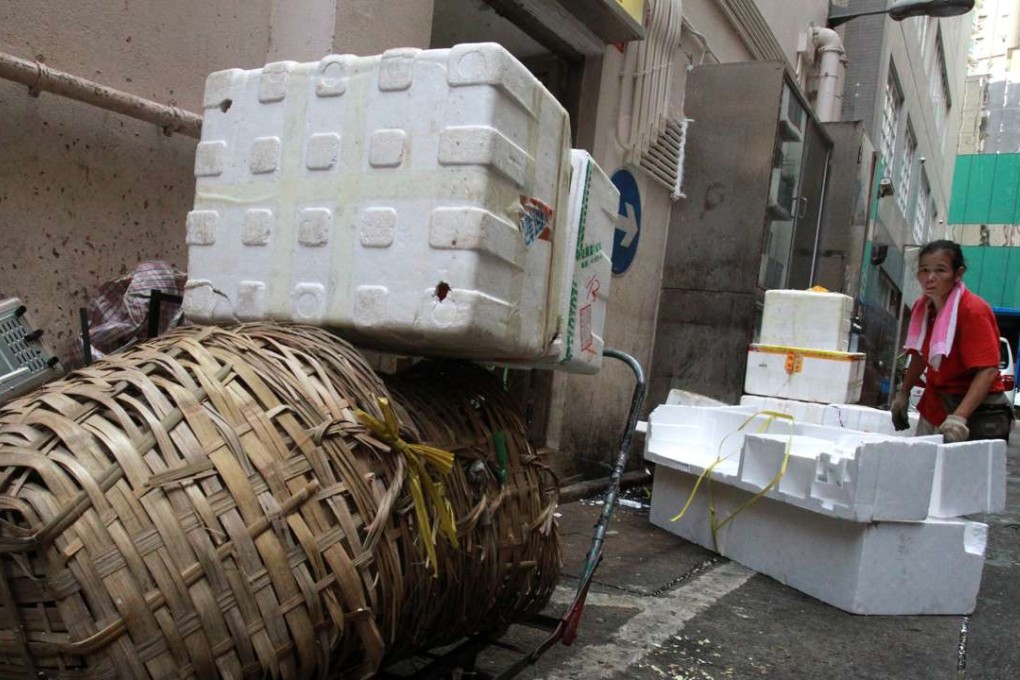Hong Kong’s fisheries blame lack of recycling facilities for polystyrene litter disaster of ‘crisis proportions’
Urban planning concern group Designing Hong Kong inspected the Aberdeen Wholesale Fish Market and described the inundation of coastlines with floating polystyrene as an environmental disaster

Fisheries representatives have blamed a lack of on-site recycling facilities for the city’s chronic problem of polystyrene boxes ending up in the sea.
This comes as an urban planning concern group described the latest inundation of coastlines with floating polystyrene as an environmental disaster of “crisis proportions”.
Designing Hong Kong inspected the Aberdeen Wholesale Fish Market earlier this month, revealing a worrying scene that showed mounds of foam boxes being laid out haphazardly by the roadside or around waste bins.
Chunks of them were flattened or broken by the trucks moving in and out of the facility. Boxes or fragments were seen floating in the typhoon shelter or clogged in drains.
“It starts here in the fish market,” said Southern district councillor Paul Zimmerman, who heads the group, calling the lack of care from the industry “criminal”.